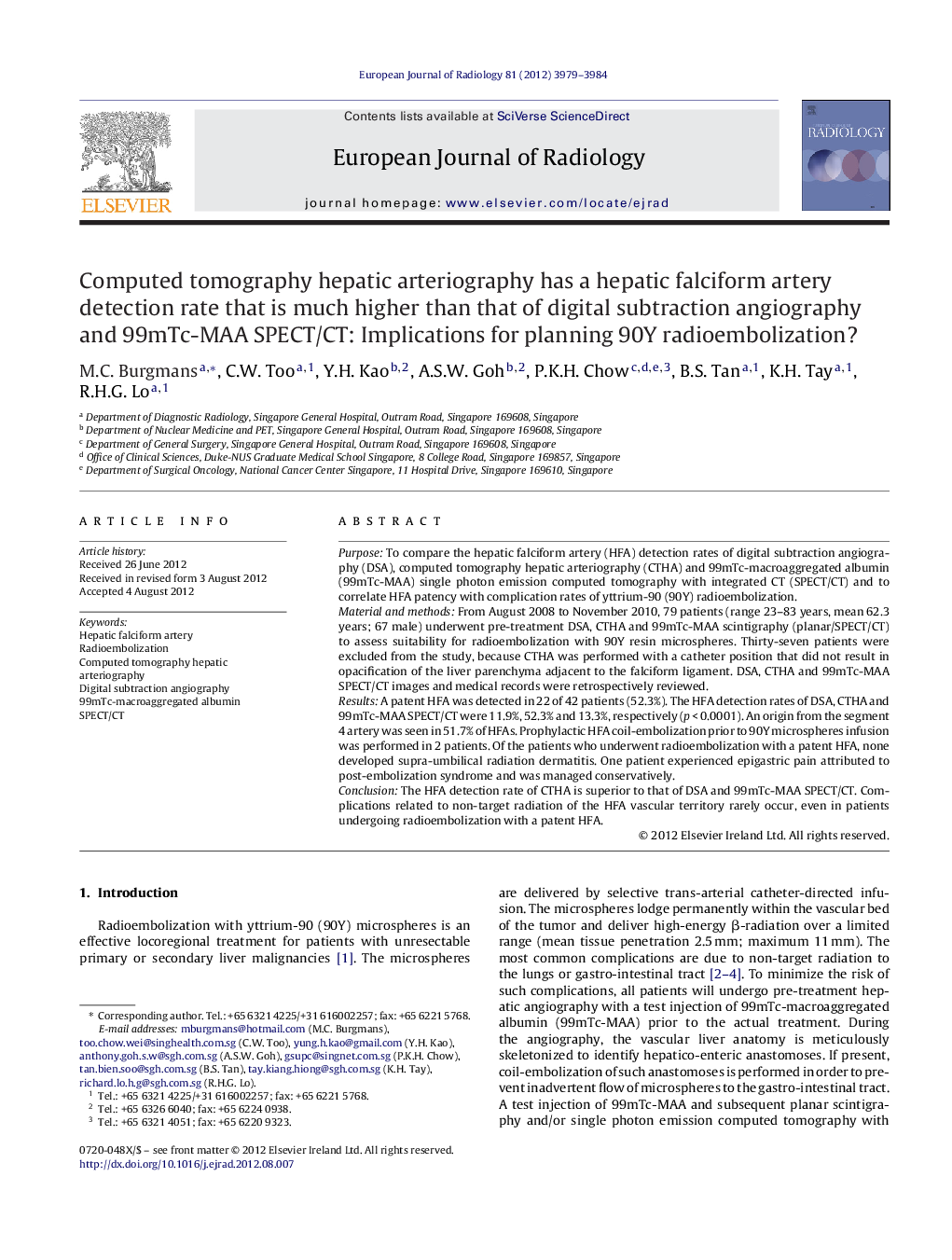| Article ID | Journal | Published Year | Pages | File Type |
|---|---|---|---|---|
| 6244794 | European Journal of Radiology | 2012 | 6 Pages |
PurposeTo compare the hepatic falciform artery (HFA) detection rates of digital subtraction angiography (DSA), computed tomography hepatic arteriography (CTHA) and 99mTc-macroaggregated albumin (99mTc-MAA) single photon emission computed tomography with integrated CT (SPECT/CT) and to correlate HFA patency with complication rates of yttrium-90 (90Y) radioembolization.Material and methodsFrom August 2008 to November 2010, 79 patients (range 23-83 years, mean 62.3 years; 67 male) underwent pre-treatment DSA, CTHA and 99mTc-MAA scintigraphy (planar/SPECT/CT) to assess suitability for radioembolization with 90Y resin microspheres. Thirty-seven patients were excluded from the study, because CTHA was performed with a catheter position that did not result in opacification of the liver parenchyma adjacent to the falciform ligament. DSA, CTHA and 99mTc-MAA SPECT/CT images and medical records were retrospectively reviewed.ResultsA patent HFA was detected in 22 of 42 patients (52.3%). The HFA detection rates of DSA, CTHA and 99mTc-MAA SPECT/CT were 11.9%, 52.3% and 13.3%, respectively (p < 0.0001). An origin from the segment 4 artery was seen in 51.7% of HFAs. Prophylactic HFA coil-embolization prior to 90Y microspheres infusion was performed in 2 patients. Of the patients who underwent radioembolization with a patent HFA, none developed supra-umbilical radiation dermatitis. One patient experienced epigastric pain attributed to post-embolization syndrome and was managed conservatively.ConclusionThe HFA detection rate of CTHA is superior to that of DSA and 99mTc-MAA SPECT/CT. Complications related to non-target radiation of the HFA vascular territory rarely occur, even in patients undergoing radioembolization with a patent HFA.
